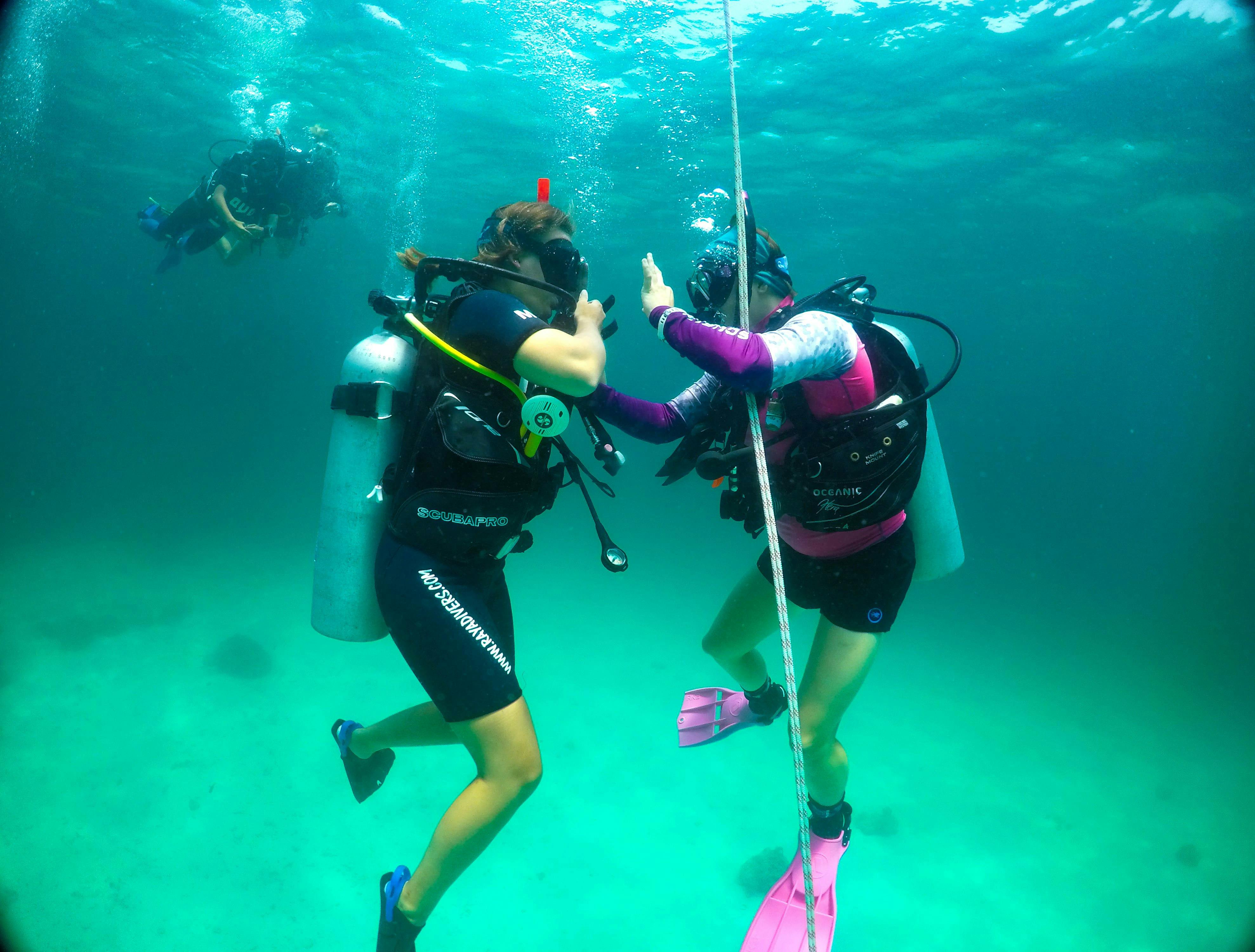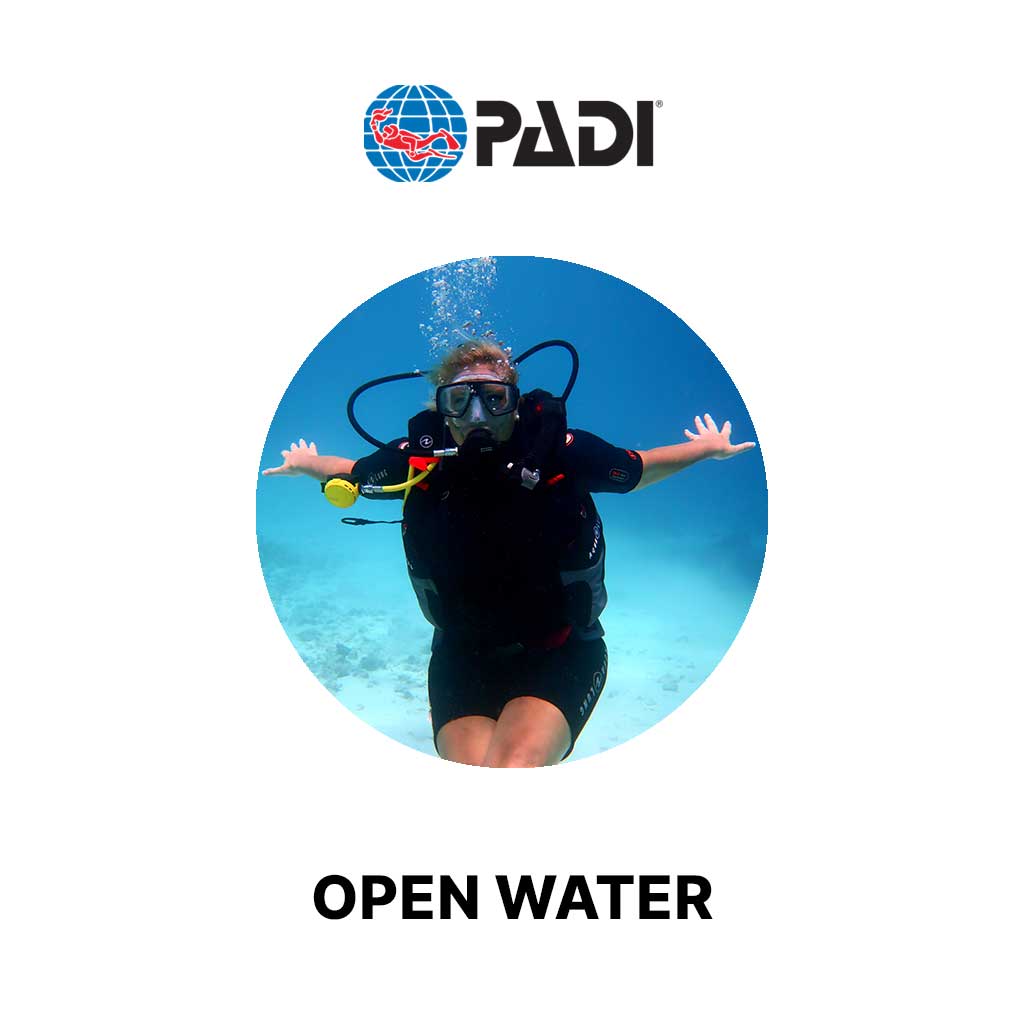So, you've decided to dive into the world of scuba diving and are curious about the open water diving depth limits. Open water diving depth is one of the most important aspects of scuba diving that every beginner needs to know. Whether you're planning your first dive or want to push your limits, understanding the depth restrictions is crucial for safety and enjoyment. Let's dive in, shall we?
Now, before we get all technical, let me tell you something cool. Diving isn't just about going deep; it's about exploring the underwater world in a way that's safe, fun, and memorable. Whether you're chasing colorful coral reefs, shipwrecks, or marine life, knowing your depth limits is key to having an awesome experience. Stick around, and I'll break it all down for you!
Oh, and don't worry if you're new to this whole diving thing. We'll cover everything from the basics of open water diving depth to advanced tips that'll make you feel like a pro in no time. So grab your snorkel and let's get started!
What is Open Water Diving?
Alright, let's start with the basics. Open water diving is like the entry-level certification for scuba divers. Think of it as your ticket to the underwater world. When you earn your open water certification, you're allowed to dive in open water environments like oceans, lakes, and quarries. It's where most divers begin their journey, and it's a blast!
But here's the thing: with open water diving comes certain limitations, especially when it comes to depth. As an open water diver, you're typically restricted to a maximum depth of 18 meters (or about 60 feet). This limit is in place for your safety, and trust me, it's not something you want to mess with. The deeper you go, the more risks you face, so sticking to these guidelines is super important.
Why Does Open Water Diving Depth Matter?
Now, you might be wondering why open water diving depth is such a big deal. Well, here's the scoop: as you dive deeper, the pressure around you increases. This increase in pressure affects your body in ways you might not expect. For one, it can lead to nitrogen narcosis, which is like being drunk underwater. Not exactly ideal when you're trying to stay focused, right?
Plus, the deeper you go, the faster your air supply gets used up. This means you'll have less time to explore and enjoy the underwater scenery. And let's not forget about decompression sickness, aka "the bends." This happens when you ascend too quickly after diving deep, and it's not a fun experience. That's why sticking to the recommended depth limits is so important.
How Deep Can You Go with Open Water Certification?
Let's talk numbers. With your open water certification, you're allowed to dive up to 18 meters (60 feet). This depth is perfect for exploring shallow reefs, wrecks, and other cool underwater spots. It gives you plenty of time to enjoy the scenery without putting yourself at unnecessary risk.
Of course, as you gain more experience and training, you can work your way up to deeper dives. But for now, 18 meters is your sweet spot. And trust me, there's plenty to see and do within that range. From colorful coral reefs to fascinating marine life, the shallow waters have a lot to offer.
Understanding Depth Limits for Beginners
Now, let's break it down even further. For beginners, it's recommended to start even shallower than the 18-meter limit. In fact, many dive instructors suggest sticking to depths of around 10-12 meters (33-40 feet) during your first few dives. This gives you a chance to get comfortable with your gear and practice your skills without the added pressure of diving too deep.
Remember, diving isn't a race. There's no need to rush to the maximum depth right away. Take your time, enjoy the experience, and gradually work your way up as you gain confidence and experience.
Factors Affecting Safe Diving Depth
There are a few factors that can affect how deep you can safely dive, even within the open water diving depth limits. Let's take a look at some of the key considerations:
- Experience Level: As a beginner, you'll want to start shallow and work your way up. More experienced divers can handle deeper dives with greater ease.
- Physical Condition: Your overall health and fitness level play a big role in how well you can handle deeper dives. Make sure you're in good shape before attempting to go beyond the recommended limits.
- Equipment: Having the right gear is crucial for safe diving. Make sure your equipment is in good working condition and that you're familiar with how to use it.
- Environmental Conditions: Things like water temperature, visibility, and currents can all impact your dive. Always be aware of your surroundings and adjust your depth accordingly.
Common Myths About Open Water Diving Depth
There are a few common myths floating around about open water diving depth that I want to clear up. First off, some people think that diving deeper automatically means a better experience. Not true! Some of the most incredible dive sites are found in shallower waters, so don't feel like you're missing out by sticking to the recommended depth limits.
Another myth is that you need to go deep to see big marine life. While it's true that some species prefer deeper waters, there's plenty of amazing wildlife to be found in the shallows too. From sea turtles to sharks, you never know what you might encounter on a shallow dive.
Debunking the "Deeper is Better" Myth
Let's talk about why deeper isn't always better. As I mentioned earlier, the deeper you go, the more risks you face. Plus, the pressure increases, which can lead to all sorts of issues like nitrogen narcosis and decompression sickness. And let's not forget about the faster air consumption. So, while going deep might sound exciting, it's not always the best choice.
Instead, focus on enjoying the experience and exploring the underwater world at a depth that's safe and comfortable for you. Trust me, there's plenty to see and do without putting yourself at unnecessary risk.
Tips for Staying Safe at Open Water Diving Depth
Now that you know the basics of open water diving depth, let's talk about how to stay safe while diving. Here are a few tips to keep in mind:
- Plan Your Dive: Always plan your dive ahead of time, including your maximum depth and time limits.
- Check Your Gear: Make sure your equipment is in good working condition and that you're familiar with how to use it.
- Stay Within Limits: Stick to the recommended depth limits for your certification level and experience.
- Ascend Slowly: Always ascend slowly to avoid decompression sickness.
- Stay Aware: Be aware of your surroundings and adjust your depth as needed based on environmental conditions.
Exploring the Best Dive Sites Within Open Water Depth Limits
So, where can you go to experience the best dive sites within the open water diving depth limits? There are plenty of amazing spots around the world that offer incredible diving experiences without requiring you to go too deep. Here are a few of my favorites:
- Great Barrier Reef, Australia: This iconic reef system is home to some of the most stunning coral and marine life in the world. And the best part? Many of the best dive sites are within the open water depth limits.
- Red Sea, Egypt: The Red Sea is known for its crystal-clear waters and vibrant coral reefs. You can explore some of the most beautiful dive sites without going too deep.
- Maldives: The Maldives offers some of the best shallow dive sites in the world, with plenty of opportunities to see amazing marine life like manta rays and whale sharks.
What to Look for in a Great Shallow Dive Site
When choosing a dive site, look for places with good visibility, calm waters, and plenty of marine life. Shallow dive sites often offer the best opportunities to see colorful coral reefs and fascinating underwater ecosystems. Plus, they're usually easier to access and require less advanced skills, making them perfect for open water divers.
Training Beyond Open Water Diving Depth
Once you've mastered the basics of open water diving, you might be ready to take the next step and explore deeper waters. But before you do, you'll need to undergo additional training. Advanced diving courses will teach you the skills and techniques needed to dive safely at greater depths.
Some of the courses you might consider include:
- Advanced Open Water: This course builds on your open water certification and introduces you to deeper dives and more challenging environments.
- Deep Diver: This course focuses specifically on diving deeper than the open water limit, teaching you how to safely handle the added risks and challenges.
- Enriched Air Nitrox: This course teaches you how to use nitrox, a special gas mix that allows for longer dive times and reduces the risk of decompression sickness.
Is Deeper Diving Right for You?
Before you sign up for advanced courses, ask yourself if deeper diving is really what you want. Some divers are perfectly happy exploring the shallow waters and never feel the need to go deeper. And that's totally okay! There's no shame in sticking to what you love and what makes you feel comfortable.
Kesimpulan: Dive Smart, Dive Safe
So there you have it, everything you need to know about open water diving depth. Remember, diving is all about having fun and staying safe. Stick to the recommended depth limits, plan your dives carefully, and always be aware of your surroundings. With the right training and preparation, you'll be exploring the underwater world like a pro in no time.
Now it's your turn. Have you already started your open water diving journey? Or are you still dreaming about your first dive? Leave a comment below and let me know. And don't forget to share this article with your fellow divers so they can learn all about the importance of diving depth too!
Table of Contents
- What is Open Water Diving?
- Why Does Open Water Diving Depth Matter?
- How Deep Can You Go with Open Water Certification?
- Understanding Depth Limits for Beginners
- Factors Affecting Safe Diving Depth
- Common Myths About Open Water Diving Depth
- Debunking the "Deeper is Better" Myth
- Tips for Staying Safe at Open Water Diving Depth
- Exploring the Best Dive Sites Within Open Water Depth Limits
- Training Beyond Open Water Diving Depth

